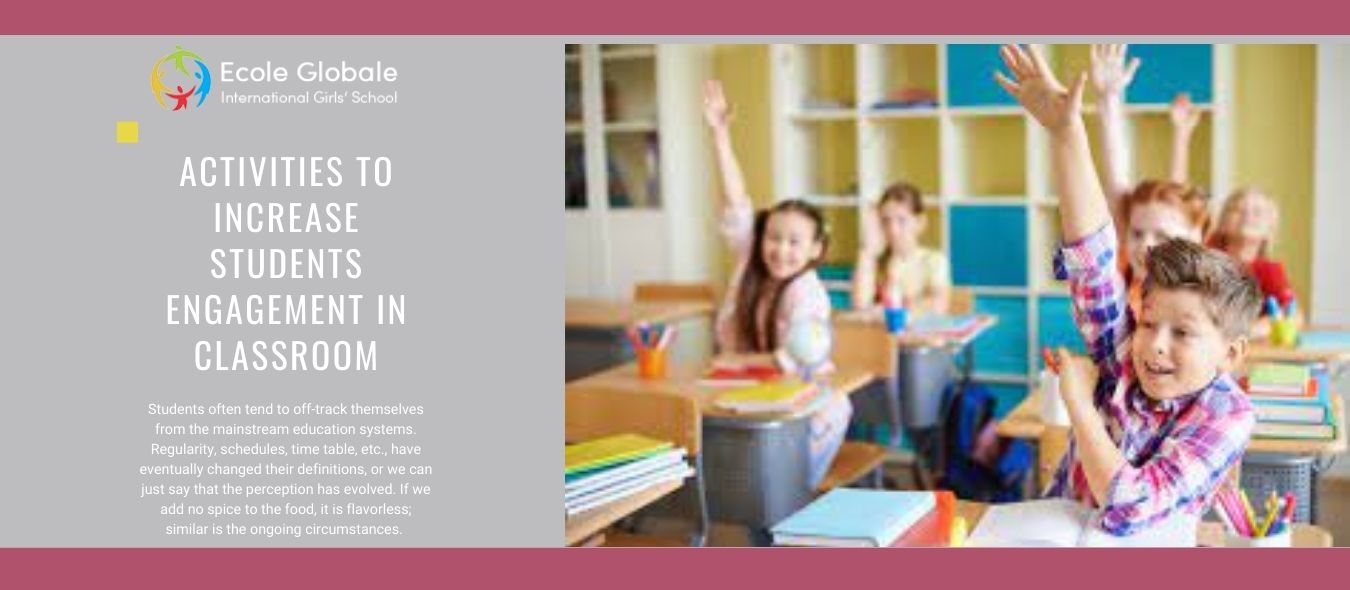Students often tend to off-track themselves from the mainstream education systems. Regularity, schedules, time table, etc., have eventually changed their definitions, or we can just say that the perception has evolved. If we add no spice to the food, it is flavorless; similar is the ongoing circumstances. Education being a much bigger platter without spices will be unwholesome and bland. Moreover, frequent boredom and lack of inspiration lead to disengagement of students. To revive enthusiasm, professional development and strategic forum can go a long way. Driving students’ piece of interest towards education is no more a herculean task. It just demands an understanding of prevailing interests among those brains. Ultimately, all the standards, instructions, and curriculum upgrades are unlikely to take root until educators can sum up the best reach out to students.
A couple of strategies and techniques can help in boosting ones’ engagement and motivation.
Clarity of expectations: A student should be well aware of the expectations he/she is supposed to match. Without clarity, a chance of misunderstanding will always be present, which in succession can end up in the desired outcome failure. This revolves around a sound communication-centric methodology where everyone should have a complete and transparent sense of respective duties.
Removing unnecessary barriers: A body confined is a mind confined. Students should be introduced to the platforms where they can figure out their abilities and interests. Exposing students to reality can manifest in increasing their understanding of things. They can fast track and then evaluate their interests and creativity, whereas restrictions can result adversely.
Establish a positive relationship: High-quality teacher-student relationships are another critical factor in determining student engagement. Educators should be concerned about students’ social and emotional requisite. The virtue on which a teacher-student relationship is primarily based is fair and impartial bonding, avoiding deception, and disseminating positive attitudes and enthusiasm.
Give opportunities and values: Opportunities are the best forms of motivation, learning, making mistakes, and then rectifying. If a student gets an opportunity according to his interests and choices, he/she performs to the best of his/her understanding. Opportunities are a ladder to succeed in life and will benefit differently if done from the grass-roots level.
Technology in the Classroom: Students expect to be constantly connected and want immediate feedback. Online and mobile technology can be used to provide active learning activities and keep students engaged outside the classroom. Apart from paper-pen learning, technology can parallelly assist the young brains in prospering.
Illustrations: While giving lectures, if teachers give examples of the respective topic, they can better understand the topic.
Movement activities: Movement works equally well to engage indolent or inert students. A quick bit of physical activity will leave them more alert for the next phase of learning. Having students split into groups or arranging themselves in different areas of the room will bring out different ideas. This will gradually leave everybody with at least more than what they would have individually thought.
The reward for engagement: Rewards in every aspect of life works as a masterstroke. In this very competitive world, every individual is behind a goal and has the ambition to procure. To prove their mettle among the crowd and display themselves as extraordinary, students will actively participate in every activity organized for them.
Presentation and sharing of the work: Presenting their body of work will encourage engagement and upgrade students’ skillset. It will elevate their confidence to speak in front of anyone and anywhere. Additionally, there will be exchanging of ideas and point of view, which again, at last, will fill all present there with ample perceptions. This will promote innovation and creativity. Seeing others share their work, a student who is an introvert will also try to develop his/her set of ideas. Moreover, this will make students accountable and responsible for every action of theirs.
Give and take feedback: Likewise to rewards, feedback also plays a vital role. Reward holders will be one or two, but everyone deserves an appreciation for their efforts towards achieving their desired objectives and meeting teachers’ expectations. Feedback gives one an idea about where to make improvements. In addition to this, students themselves provide innovative ideas for engagement. Asking them for recommendations like how they want to work? In groups or individually, this will make them active learners from passive consumers.
Moisturize your souls: Humor lightens and brightens the atmosphere. Laughing with the students encourages them to express themselves frankly and without any hesitation.
Mix the media: No two brains grasp equivalently, so educators, by presenting lessons in a manner that welcomes multiple learning styles, are more likely to hold their attention. Whenever possible, consider integrating with new educational technologies and hands-on manipulatives. Alternative ways of learning can help every child to instill and impart more effectively and efficiently.









